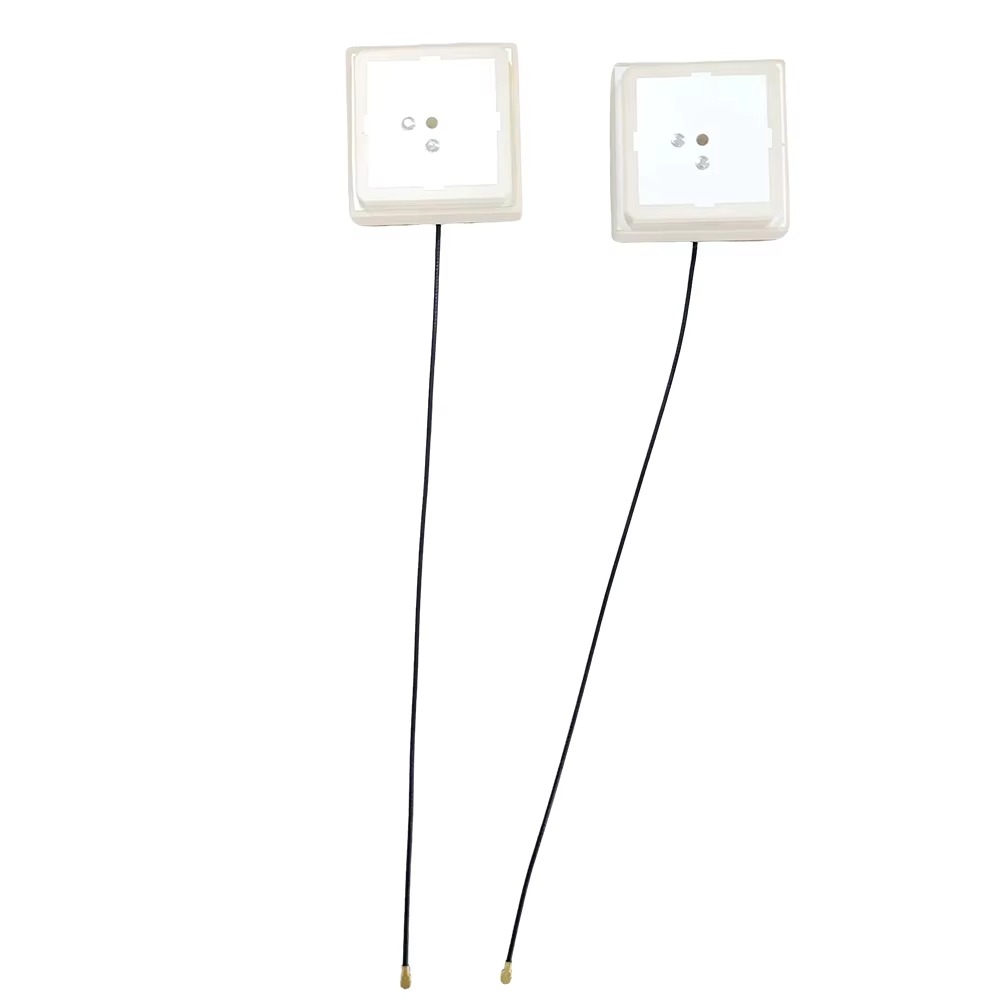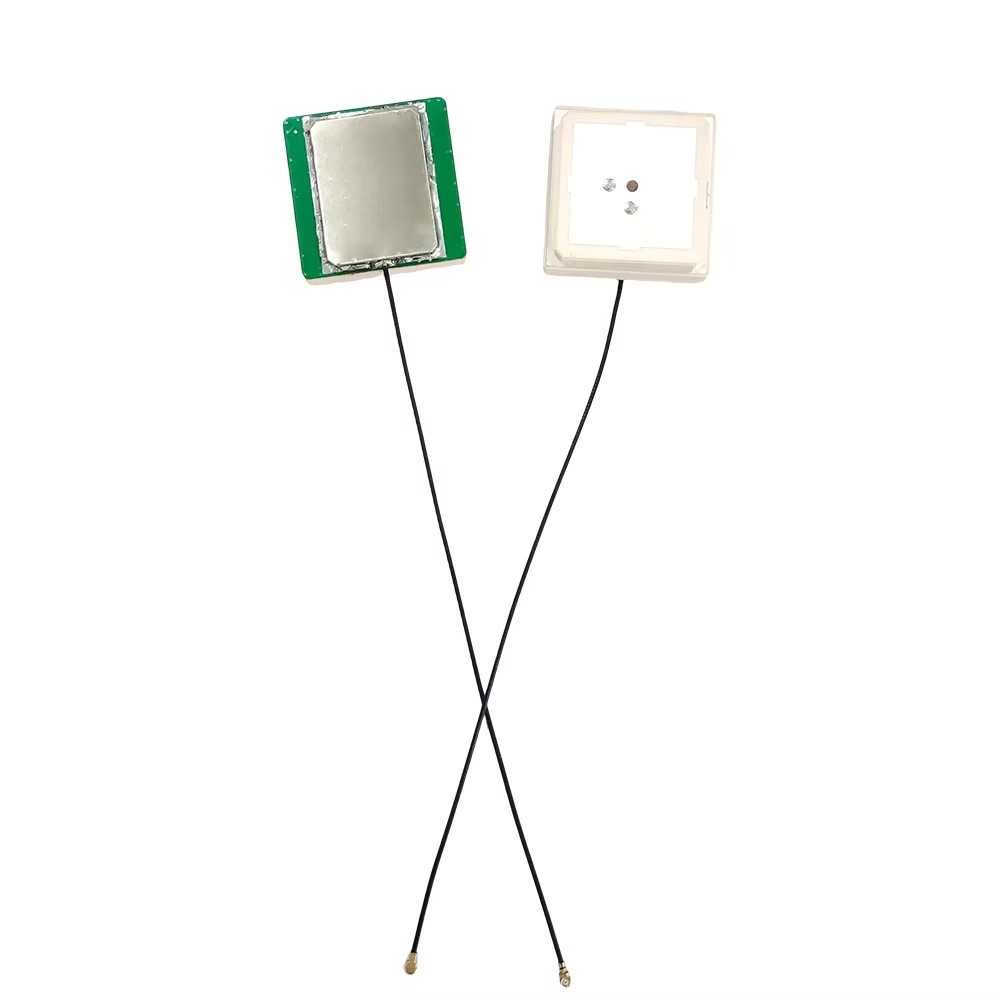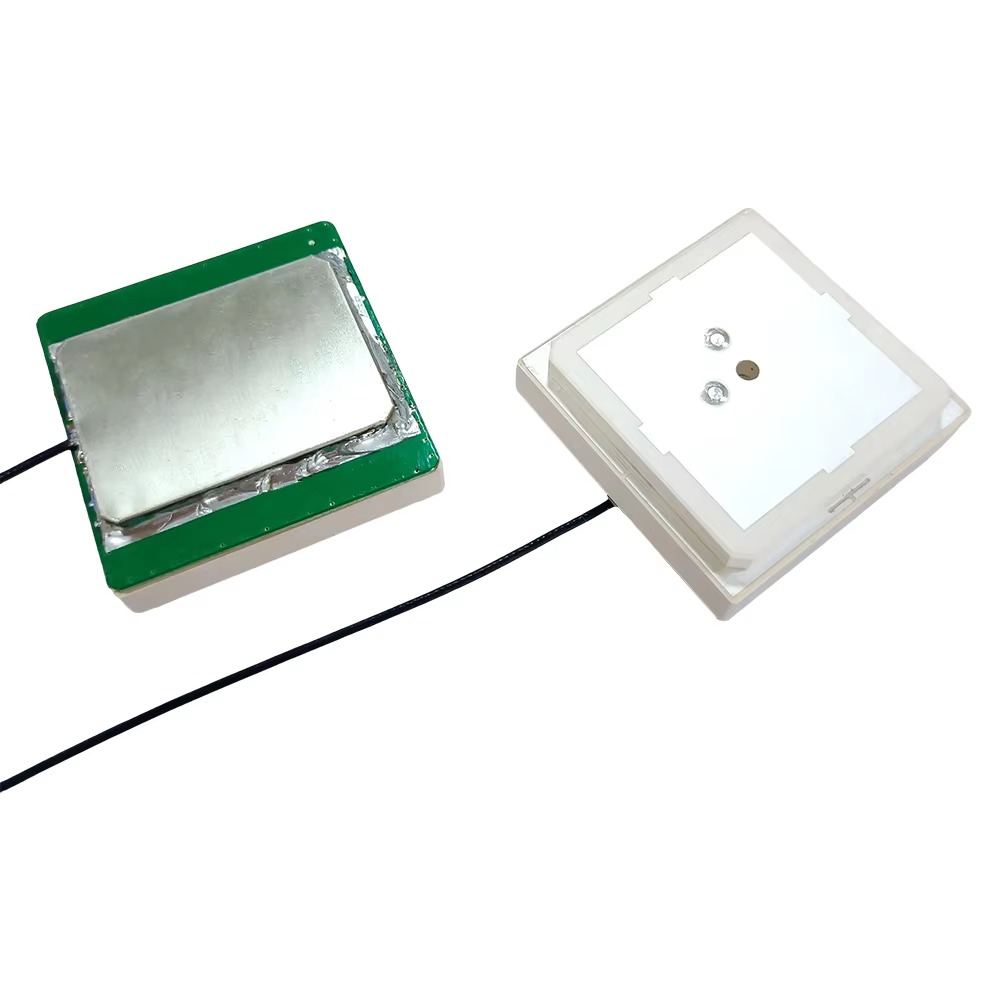5.1 Current Applications in Various Industries
5.1.1 Surveying and Mapping
In the surveying and mapping industry, GPS RTK ceramic patch antennas are extensively used. Traditional surveying methods, such as using total stations and theodolites, are time - consuming and require line - of - sight between measurement points. GPS RTK technology, with its ceramic patch antennas, has revolutionized this field. Surveyors can now cover large areas more quickly and accurately.
For example, in land surveying, GPS RTK devices with ceramic patch antennas can precisely measure property boundaries, topographical features, and elevation levels. The high - precision positioning allows for the creation of highly detailed and accurate maps. In hydrographic surveying, which involves mapping the underwater terrain, GPS RTK ceramic patch antennas are used in combination with sonar systems. The accurate positioning provided by theantenna ensures that the sonar data is accurately georeferenced, enabling the creation of precise underwater maps for navigation, resource exploration, and environmental monitoring. In aerial surveying, UAVs equipped with GPS RTK ceramic patch antennas can capture high - resolution aerial images while maintaining precise position information for each image. This allows for the generation of detailed 3D models of the terrain, which are widely used in urban planning, disaster assessment, and infrastructure development.
5.1.2 Precision Agriculture
The application of GPS RTK ceramic patch antennas in precision agriculture has transformed the way farming operations are conducted. In modern agriculture, maximizing crop yields while minimizing resource waste is a top priority, and high - precision positioning plays a key role in achieving this goal.
Tractors and harvesters equipped with GPS RTK systems and ceramic patch antennas can be guided along pre - determined paths with centimeter - level accuracy. This enables precise planting, where seeds are sown at the optimal spacing and depth. For example, in corn farming, the accurate guidance ensures that each seed is planted in a straight line and at the correct distance from neighboring seeds, which promotes uniform growth and reduces competition for resources such as sunlight, water, and nutrients.
Fertilizer and pesticide application is another area where GPS RTK ceramic patch antennas are highly valuable. By using the precise positioning information, farmers can apply fertilizers and pesticides only to the areas that need them. This is done by creating variable - rate application maps based on soil nutrient levels, crop health, and other factors. The agricultural machinery, guided by the GPS RTK system, adjusts the application rate in real - time as it moves across the field. This not only reduces the cost of fertilizers and pesticides but also minimizes the environmental impact by preventing over - application, which can lead to soil and water pollution.
Irrigation management is also improved with the use of GPS RTK ceramic patch antennas. Precision irrigation systems can be integrated with GPS RTK technology to deliver water precisely to the root zones of the crops. By knowing the exact position of each area of the field, farmers can control the irrigation amount and timing more accurately, ensuring that the crops receive the right amount of water when they need it. This helps to conserve water resources and improve crop water use efficiency.
5.1.3 Construction and Infrastructure Development
In the construction industry, the demand for high - precision positioning to ensure the quality and efficiency of construction projects has led to the widespread use of GPS RTK ceramic patch antennas. Construction equipment such as bulldozers, excavators, graders, and pavers are now commonly equipped with GPS RTK systems.
During the site preparation phase, GPS RTK ceramic patch antennas enable accurate grading of the land. Graders equipped with the technology can precisely level the ground to the required elevation, ensuring that the foundation of the structure is built on a stable and even surface. This reduces the risk of structural problems in the future and saves time and costs associated with rework.
In road construction, GPS RTK ceramic patch antennas are used to control the paving process. Pavers can be guided to lay asphalt or concrete with precise thickness and slope. The high - precision positioning ensures that the road surface is smooth and meets the design specifications, which improves the durability and safety of the road. Additionally, the accurate positioning of construction equipment helps to optimize the use of materials, reducing waste and lowering construction costs.
For large - scale infrastructure projects such as bridges and tunnels, GPS RTK ceramic patch antennas are used to monitor the construction process and ensure that the components are installed in the correct position. Surveyors can use handheld GPS RTK devices with ceramic patch antennas to measure the position of structural elements, such as bridge girders or tunnel segments, and compare them to the design plans. Any deviations can be detected and corrected in a timely manner, ensuring the structural integrity of the project.
5.1.4 Automotive and Transportation
The automotive industry is increasingly adopting GPS RTK technology with ceramic patch antennas to support advanced driver - assistance systems (ADAS) and the development of autonomous driving.
ADAS features such as lane - keeping assist, adaptive cruise control, and automatic emergency braking rely on accurate positioning information to function properly. GPS RTK ceramic patch antennas provide the high - precision positioning needed to determine the vehicle's exact position relative to the road lanes, other vehicles, and road infrastructure. For example, lane - keeping assist systems use the positioning data to detect if the vehicle is drifting out of its lane and provide corrective steering inputs to keep the vehicle on track.
In the development of autonomous driving, GPS RTK ceramic patch antennas are essential for enabling the vehicle to navigate safely and accurately. Autonomous vehicles need to know their position with centimeter - level accuracy to make decisions such as turning, changing lanes, and avoiding obstacles. The combination of GPS RTK technology and ceramic patch antennas, along with other sensors such as LiDAR, radar, and cameras, provides a comprehensive perception and navigation system for autonomous vehicles.
In the transportation sector, GPS RTK ceramic patch antennas are also used in fleet management. Logistics companies can track the position of their vehicles in real - time with high accuracy, allowing them to optimize route planning, improve delivery efficiency, and monitor driver behavior. The precise positioning information helps to reduce fuel consumption, minimize delivery delays, and enhance the overall productivity of the fleet.
5.2 Future Trends in GPS RTK Ceramic Patch Antenna Technology
5.2.1 Multi - Constellation and Multi - Frequency Support
One of the key future trends in GPS RTK ceramic patch antenna technology is the increased support for multiple satellite constellations and frequency bands. Currently, GPS RTK systems mainly use signals from the GPS constellation, but with the development of other global navigation satellite systems (GNSS) such as GLONASS (Russia), Galileo (European Union), BeiDou (China), and QZSS (Japan), future ceramic patch antennas will be designed to receive signals from multiple constellations simultaneously.
By supporting multiple constellations, the antenna can access a larger number of satellites, which improves the availability and reliability of positioning, especially in challenging environments such as urban canyons and dense forests. For example, in an urban area where GPS signals may be blocked by tall buildings, signals from GLONASS or BeiDou satellites may still be available, ensuring that the positioning system continues to function.
In addition to multi - constellation support, future ceramic patch antennas will also be designed to operate on multiple frequency bands. GPS uses L1 and L2 bands, while other GNSS systems have their own frequency bands. For instance, Galileo uses E1, E2, and E5 bands, and BeiDou uses B1, B2, and B3 bands. By supporting multiple frequency bands, the antenna can capture more signal information, which helps to reduce the impact of ionospheric and tropospheric delays on positioning accuracy. This will further improve the precision and stability of GPS RTK systems.
5.2.2 Miniaturization and Integration with Other Components
The trend towards miniaturization of electronic devices is driving the development of smaller and more compact GPS RTK ceramic patch antennas. As applications such as wearable devices, small UAVs, and portable surveying equipment require smaller form factors, antenna designers are exploring new materials and design techniques to reduce the size of ceramic patch antennas without compromising their performance.
Advancements in ceramic material technology, such as the development of ceramic materials with even higher dielectric constants, will enable the creation of smaller antennas. Additionally, innovative antenna designs, such as multi - layer ceramic patch antennas or fractal - based patch antennas, can help to reduce the physical size of the antenna while maintaining a wide bandwidth and high gain.
Another future trend is the integration of GPS RTK ceramic patch antennas with other electronic components. For example, antennas may be integrated with low - noise amplifiers (LNAs), filters, and other RF front - end components into a single module. This integration simplifies the design and manufacturing process of GPS RTK devices, reduces the overall size and weight of the device, and improves the performance and reliability of the system by minimizing signal loss between components.
5.2.3 Enhanced Anti - Interference and Anti - Multipath Capabilities
With the increasing number of wireless devices and the growing complexity of the electromagnetic environment, the issue of signal interference and multipath effects is becoming more severe. Future GPS RTK ceramic patch antennas will be equipped with enhanced anti - interference and anti - multipath capabilities to ensure reliable signal reception and high - precision positioning.
In terms of anti - interference, new antenna designs will incorporate techniques such as adaptive beamforming and null steering. Adaptive beamforming allows the antenna to focus its radiation pattern towards the desired satellites, while null steering creates nulls in the radiation pattern towards sources of interference. This helps to reduce the impact of external electromagnetic interference on the received GPS signals.
To address multipath effects, antenna designers are developing new patch shapes and ground plane configurations. For example, the use of chiral structures or metamaterial - based ground planes can help to reduce the reflection of signals from the ground or nearby objects, minimizing the number of multipath signals reaching the antenna. Additionally, signal processing algorithms will be further optimized to detect and eliminate multipath signals during the data processing phase.
5.2.4 Energy Efficiency and Low - Power Operation
As more GPS RTK devices are used in battery - powered applications such as portable surveying instruments, UAVs, and wearable devices, energy efficiency and low - power operation have become important considerations for future ceramic patch antennas.
Future antenna designs will focus on reducing the power consumption of the antenna and the associated RF front - end components. This can be achieved through the use of low - power materials and components, as well as optimized antenna structures that minimize power loss. For example, the use of high - conductivity metals for the patch and feed lines can reduce resistive losses, improving the overall efficiency of the antenna.
In addition, advanced power management techniques will be integrated into GPS RTK systems to optimize the power consumption of the antenna. For instance, the antenna can be put into a low - power sleep mode when not in use, and wake up only when needed to receive satellite signals. This helps to extend the battery life of the device, making it more suitable for long - duration field operations.
Conclusion
6.1 Summary of Key Findings
GPS RTK ceramic patch antennas have emerged as a critical component in enabling high - precision positioning across a wide range of industries. This analysis has highlighted several key findings regarding their overview, design and construction, working principles, advantages and challenges, applications, and future trends.
In terms of overview, GPS RTK technology, when combined with ceramic patch antennas, achieves centimeter - level accuracy by using a reference station to provide real - time correction data to a rover station. Ceramic patch antennas play a vital role in this system by receiving weak GPS signals, and their high dielectric constant, compact design, good environmental adaptability, and easy integration make them well - suited for GPS RTK applications. The market for these antennas is growing, driven by demand from industries such as surveying and mapping, agriculture, construction, and automotive.
The design and construction of GPS RTK ceramic patch antennas involve key components including a ceramic substrate, conductive patch, feed mechanism, and optional ground plane. Design considerations for high - precision applications include bandwidth, radiation pattern, gain, and mechanical ruggedness. Manufacturing processes such as ceramic substrate preparation, conductive patch formation, and component assembly are crucial for ensuring the performance and reliability of the antenna.
The working principles of GPS RTK ceramic patch antennas involve the reception of electromagnetic waves from GPS satellites, the interaction with these signals to induce an electric current, and the subsequent signal processing in the GPS RTK system. Signal amplification, filtering, demodulation, and carrier - phase differencing are key steps in the signal processing chain that enable high - precision positioning.
The advantages of GPS RTK ceramic patch antennas include high - precision positioning, compact and lightweight design, good environmental adaptability, and easy integration. However, they also face challenges such as signal interference and multipath effects, limited bandwidth, dependence on satellite visibility, and the need to balance cost and performance.
Current applications span multiple industries, including surveying and mapping (for land, hydrographic, and aerial surveys), precision agriculture (for planting, fertilization, and irrigation), construction (for site preparation, road construction, and infrastructure projects), and automotive (for ADAS and autonomous driving). Future trends include increased multi - constellation and multi - frequency support, further miniaturization and integration, enhanced anti - interference and anti - multipath capabilities, and improved energy efficiency.
6.2 Significance and Impact
The development and widespread adoption of GPS RTK ceramic patch antennas have had a significant impact on various industries and society as a whole. In the surveying and mapping industry, they have revolutionized the way maps are created, making the process faster, more accurate, and more efficient. This has enabled better urban planning, disaster management, and resource exploration.
In agriculture, the use of GPS RTK ceramic patch antennas has contributed to the development of precision agriculture, which helps to increase crop yields, reduce resource waste, and minimize environmental impact. This is crucial in addressing global food security challenges and promoting sustainable agriculture practices.
In the construction industry, the technology has improved the quality and efficiency of construction projects, reducing costs and ensuring the safety and durability of infrastructure. This supports economic development and the creation of high - quality built environments.
In the automotive industry, GPS RTK ceramic patch antennas are playing a key role in the advancement of ADAS and autonomous driving, which have the potential to reduce traffic accidents, improve traffic flow, and enhance the mobility of people with disabilities.
6.3 Future Outlook
Looking ahead, the future of GPS RTK ceramic patch antenna technology is promising. As the demand for high - precision positioning continues to grow in emerging applications such as smart cities, Internet of Things (IoT), and unmanned systems (including autonomous ships and drones), the development of more advanced ceramic patch antennas will be driven forward.
Research and development efforts will focus on addressing the current challenges, such as improving anti - interference and anti - multipath capabilities, expanding bandwidth to support more satellite constellations and frequency bands, and reducing the size and power consumption of the antennas. Additionally, the integration of GPS RTK ceramic patch antennas with other emerging technologies such as artificial intelligence (AI) and machine learning will further enhance the performance and functionality of GPS RTK systems.
AI - powered signal processing algorithms can be used to better detect and eliminate interference and multipath signals, as well as optimize the satellite tracking and positioning process. Machine learning techniques can also be applied to antenna design, enabling the automatic optimization of antenna parameters for specific applications and environments.
In conclusion, GPS RTK ceramic patch antennas are a key enabler of high - precision positioning technology, with wide - ranging applications and significant potential for future development. As technology continues to advance, they will play an even more important role in shaping the future of various industries and improving the quality of life for people around the world.




































































 Language
Language
 En
En Cn
Cn Korean
Korean

 Home >
Home > 







 18665803017 (Macro)
18665803017 (Macro)













